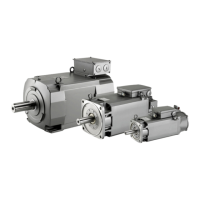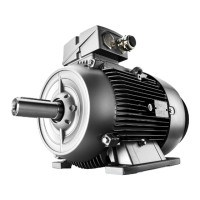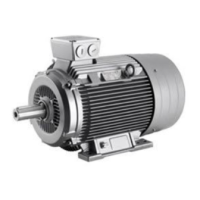Free duty cycle
A load duty cycle denes the characteristics of the motor speed and the torque with respect to
time.
Figure6-3 Example of a duty cycle
A load torque is specied for each time period. In addition to the load torque, the average
load moment of inertia and motor moment of inertia must be taken into account for
acceleration. It may be necessary to take into account a frictional torque that opposes the
direction of motion.
For gearbox mounting:
In determining the load and acceleration torque required by the motor, the gear ratio and
the gear eciency must be considered. A higher gear ratio increases positioning accuracy
in terms of encoder resolution. For any given motor encoder resolution, as the gear ratio
increases, so does the resolution of the machine position to be detected.
Note
Duty cycles in the eld-weakening range
For duty cycles in the eld-weakening range, the drive system must be engineered using the TST
engineering tool.
Permissible motor torque
Once the application has been dened and specied, the maximum motor torque is calculated.
Generally, the maximum motor torque is required when accelerating. The load torque and the
torque required to accelerate the motor are added.
The maximum motor torque is then veried with the limiting characteristic curves of the
motors.
Conguration
6.2Procedure when engineering
1PH8 SIMOTICS M main motors
208 Conguration Manual, 12/2022, A5E51895839A

